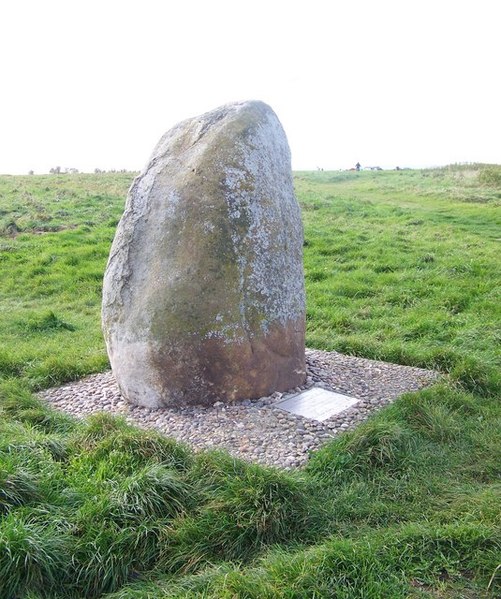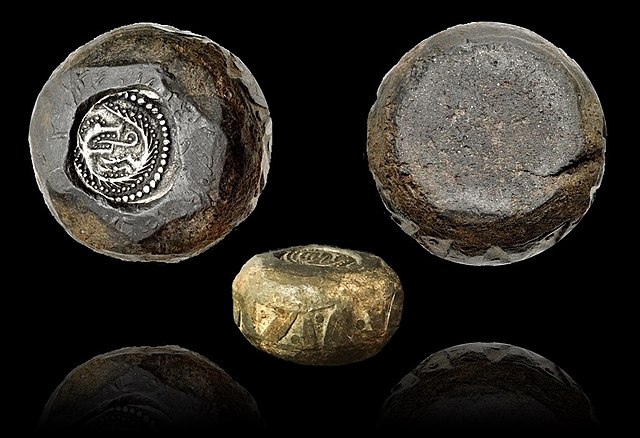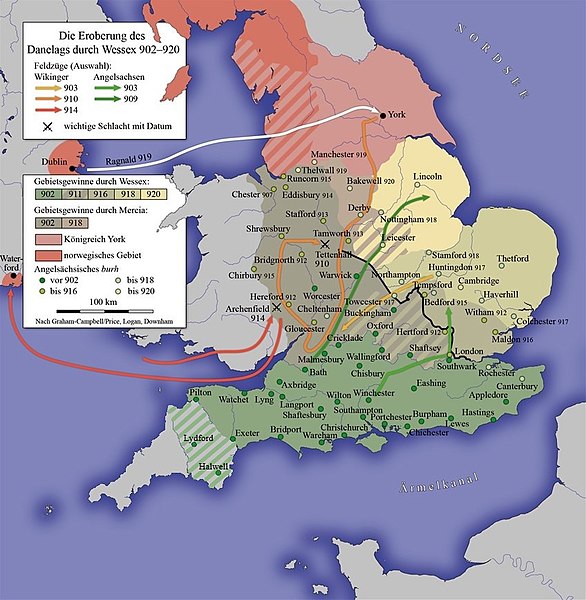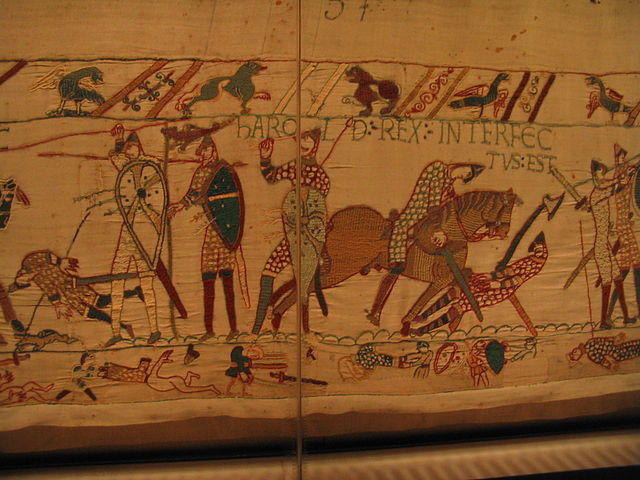At the Battle of Edington, an army of the kingdom of Wessex under Alfred the Great defeated the Great Heathen Army led by the Dane Guthrum on a date between 6 and 12 May 878, resulting in the Treaty of Wedmore later the same year. Primary sources locate the battle at "Eðandun". Until a scholarly consensus linked the battle site with the present-day village of Edington in Wiltshire, it was known as the Battle of Ethandun. This name continues to be used.
Memorial to the Battle of Ethandun erected in 2000 near the hillfort of Bratton Castle.
King Alfred's Tower (1772) on one supposed site of Egbert's Stone, the mustering place before the battle
The Kingdom of the West Saxons, also known as the Kingdom of Wessex, was an Anglo-Saxon kingdom in the south of Great Britain, from around 519 until England was unified in 927.
Imaginary depiction of Cerdic from John Speed's 1611 "Saxon Heptarchy"
Anglo-Saxon–Viking coin weight, used for trading bullion and hacksilver. The material is lead and it weighs 36 g (1.3 oz). Embedded with an Anglo-Saxon sceat (Series K type 32a) dating to 720–750 and minted in Kent. It is edged in a dotted triangle pattern. Its origin is the Danelaw region and dates to 870–930
Unification of England and Defeat of the Danelaw in the 10th century under Wessex.
The Bayeux Tapestry, depicting the death of Harold II, 14 October 1066. His "Wyvern Standard" can be clearly seen at the left side.






